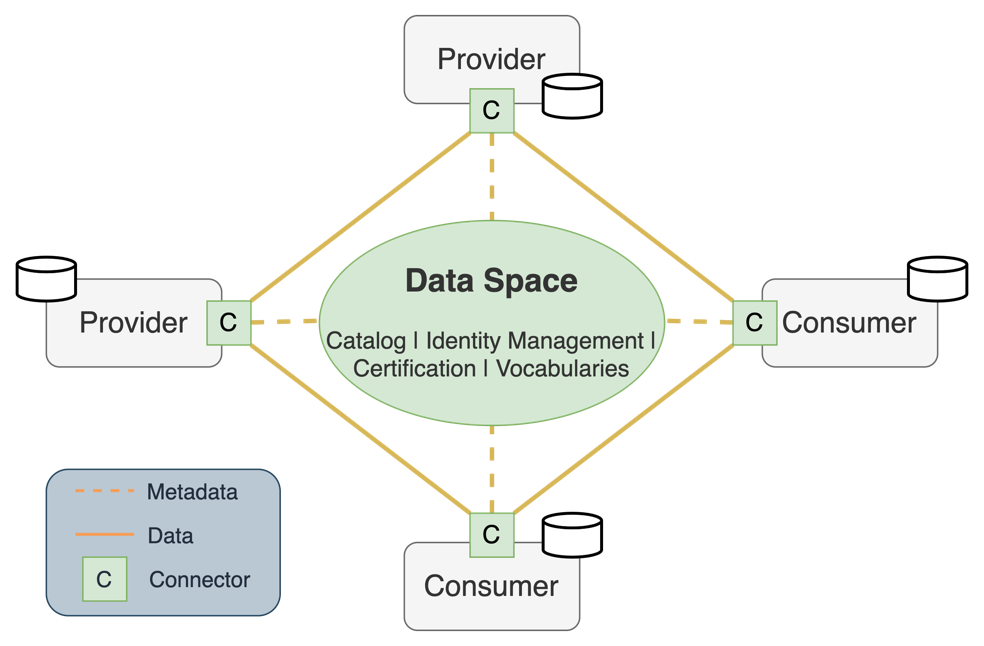The landscape of European Common Data Spaces (hereinafter referred as data spaces) is evolving rapidly, driven by European Union (EU) policies (check our previous blog post) and collaborative efforts from leading organizations in the field.
Although data is essential for numerous businesses and individuals, it is often difficult to find, securely publish, and share. Additionally, maintaining control over data once it has been shared can be almost impossible. Data spaces have been considered by the EC as one way to solve these and other problems faced by data owners looking to share data and data users seeking high-quality data.
What are data spaces?
Data spaces are data infrastructures and governance frameworks to facilitate widespread data pooling and sharing. They provide tools and services for data processing and sharing as well as federating energy-efficient cloud capacities. They establish transparent and fair data governance structures in compliance with EU legislation to enhance the availability, quality, and interoperability of data across sectors. By creating EU-wide common and interoperable data spaces, the aim is to eliminate existing legal and technical barriers, thereby unlocking the vast potential for data-driven innovation. Data spaces operate as marketplaces, enabling data owners and service providers (such as organizations offering data, start-ups providing data processing pipelines or companies supplying hardware for data collection) to receive financial compensation for their contributions. The specific terms of compensation are detailed in contracts that are automatically processed by the data space instances.
The figure below illustrates a simplified conceptual architecture of a data space where two data providers and two data consumers can exchange data. As depicted, each participant is required to implement a connector, a software component enabling each organization involved in the exchange to define the structure, construction, and management of digital processes, infrastructures, and data flows. This ensures adherence to policies and data sovereignty regulations. In the center, various services offered by the data space include the catalog of resources and the identification management service.
Source: AWS ().
Key organizations
Four organizations are pivotal in implementing the data economy envisioned by the European Commission (EC).
- The Business Data Value Association (BDVA) is an industry-driven organisation dedicated to fostering an innovation ecosystem for the data-driven digital transformation of Europe’s economy and society.
- The FIWARE Foundation promotes the adoption of open standards for smart solutions across domains such as agrofood and smart cities.
- The Gaia-X European Association for Data and Cloud AISBL seeks to create a trustworthy data-sharing ecosystem emphasizing user control and data sovereignty through a federated system. It is supported by several national hubs, including Gaia-X Spain.
- Finally, the International Data Space Association (IDSA) is a non-profit coalition present in 28 countries. It has established an architecture, interfaces and sample code for an open, secure data ecosystem of trusted partners.
These organizations have collaborated to form the Data Spaces Business Alliance, uniting their efforts to create a common framework to bring data spaces to fruition.
Our team at Gradiant has delved deep into the data space domain. We’re here to help our customers and partners understand what they are, the potential benefits of getting involved, and the effort vs. benefit considerations. So don’t hesitate. Contact us and let’s talk.
This blog post will resume on February 1st, where we will delve into some of the most valuable resources for developers navigating the world of data spaces. Stay tuned!
Author: Helena Fernández López, head of Data Innovation at Gradiant




